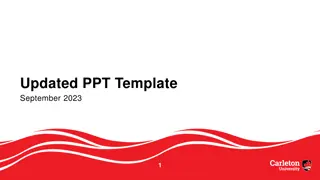A Brief Comparison: Anarchy and Democracy in India
India's transition from anarchy under imperialist rule to democracy post-independence is explored through key legislative acts and reforms implemented over the years. The presentation examines the Regulating Act of 1773, Indian High Courts Act of 1861, and Government of India Acts of 1858, 1919, and 1935, shedding light on the shift towards a sovereign, secular, and democratic republic. The Revolt of 1857 also played a crucial role in shaping India's governance structure.
Download Presentation

Please find below an Image/Link to download the presentation.
The content on the website is provided AS IS for your information and personal use only. It may not be sold, licensed, or shared on other websites without obtaining consent from the author. Download presentation by click this link. If you encounter any issues during the download, it is possible that the publisher has removed the file from their server.
E N D
Presentation Transcript
Presentation on A Brief Comparison : Anarchy and Democracy. -Presented by Titiksha Phadnis
INTRODUCTION India was under an imperialist rule for more than 150 years. The country saw its best and worst days during the British Raj. People were introduced to new reforms, provision and policies which proved to be a paradigm shift. Indian leaders believed in the strength of democracy while the British followed their queen's orders. Today, through this presentation, I intend to provide you a brief comparison between Anarchy & Democracy - how the rules & provisions changed with time. Through this presentation, we'll learn and understand about three most important acts ruled in by the Crown in order to keep India under its shade, which were - 1. 2. 3. The Regulating Act,1773 The Government of India Acts of 1858, 1919 and 1935 Indian High Courts Act., 1861
1. Regulating Act, 1773 Constitution Of India, 1950 The first ever rule of land, post independence by sovereigns. Regulating act 1773 The first official PARLIAMENTARY LEGISLATION to be executed in India by alien country. Core objective of this gazetted regulation was to bring about the regularities in the management of the EAST INDIA COMPANY (EIC). Core objective of the CONSTITUTION OF INDIA was to ensure a sovereign , socialist, secular and democratic republic state.
2. Indian High Courts Act, 1861 Indian High Courts Act, 1861 Constitution Of India, 1950 The main objective was to abolish Crown s Court and Company s Court and established High Courts in Presidency Towns. Established High Court in Every state u/a 214. Its provision was to provide with the function and powers of the High Courts. Comprised of one CHIEF JUSTICE and Other Members not more than 15. Comprises of one Chief Justice and other judges as PRESIDENT may deem fit. All judges enjoyed their power in the pleasure of the Crown. Judges enjoy their power till the time not impeached or tenure is done. Jurisdiction was Civil, Criminal, Admiralty, Testamentary, Intestate and Matrimonial. Jurisdiction will be original i.e. making rules for the court and District Courts. Qualifications- 1/3rd judges to be Barristers for not less than 5 years standing or 1/3rd judges to be members of civil services for min 10 years standing. Qualifications Person has to be a citizen of India or 10 years of judicial office in India or has been advocate of High court under Article 217.
Government Of India Acts 1858 EIC was liquidated. The crown s rule began. Principal Secretary of the State appointed. 1919 The Governor was the executive head of the province. Bicameral legislature at Central level. 1935 Introduced diarchy. Introduced federal courts. Act introduced direct elections in India for the first time.
3. Government of India Act, 1858 Government of India Act,1858 Constitution Of India, 1950 Company s Court of Directors are replaced by SC Judges, which are appointed by the President Of India. Governors of various states ae appointed by the President of India. This legislation made India a sovereign and democratic- republic state. The Indian Civil Services was to be instituted for the administration of the country. There is provision for SC, ST and Other Backward Classes. The powers of the Company s Court of Directors were vested with the Secretary of State for India. The Viceroy and the governors of the various presidencies were appointed by the Crown. This act made India a direct British colony. The Indian Civil Services was to be instituted for the administration of the country. There was provision for Indians also to be admitted to the service.
4. Government Of India Act, 1919 Government Of India Act, 1919 Extended participation of Indians in Government Of India yet India remained under the hands of the Crown. Comprised of reforms put forth by Montague Chelmsford. End towards benevolent despotism. Diarchy was into force. Act made Central Legislature bicameral. (Two houses to be working at central level.) Lower house Legislative Assembly -145 mem 3 years Upper house-Council of States- 60 members Constitution Of India, 1950 PARLIAMENT was instituted under Article 79 of Indian Constitution for the Union and was declared sovereign by the Indian Independence Act, 1947. Comprised of all reforms put forth by the Constituent Assembly. Two sets of government were formed. One at the Centre and one at the State. Lower house at center maximum 530 members elected directly by People. Upper house at center 12 nominated members + 238 members elected by electoral college. Lower house in state maximum 500 members.
5.Government Of India Act, 1935 Government Of India Act, 1935 Constitution Of India, 1950 High Court was a COURT OF RECORD. Every judge held office till the will of Majesty and till he completes 60 years of age. Qualifications: barrister or advocate in Great Britain for 10 years standing, or has been a member of Indian Civil Services for 10 years standing or worked as judge at District Court for 3 years or held judicial office in India for 5 years or was a pleader of any HC for 10 years. Supreme court then was called FEDERAL COURT. Would be A COURT OF RECORD under Art. 215. Shall be sworn under the Governor and would enjoy term till the age of 62 years or as President may deem fit. Qualifications: has to be a citizen of India or10 years of judicial office in India, has been advocate of High court under article 217.
Conclusion It is a popular misconception that the Constitution Of India was built by amalgamating other constitutions, however through this presentation, it is evident that not only the constitutions contributed to the framework of Constitution Of India but the legislations existed in Pre Independence Era. With the growing times, regulations of the different sovereigns in the State of India changed. This resulted in molding the provisions pertaining to Indian Society. We made remarkable advancements in every aspect. We thought and brainstormed different ideologies and their legal aftermaths, considered & respected the free will of every single community residing in India, created laws and amendments so strong that no person is barred from his right of justice, this is the beauty of Indian Democracy. We took references from other countries constitution, but we gave those laws a desi touch which ensured equality, liberty & fraternity for all Indian citizens.
REFERENCES BOOKS : 1. HISTORY OF COURTS by Kailash Rai 2. HISTORY by Mr. Myneni LINKS : byjus.com Wikipedia.com gktoday.com























